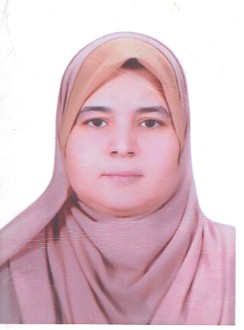Giardiasis is the most common protozoal infection of the
human intestinal tract and it is found worldwide.
In the present study, a community-based prospective
study was conducted among randomly selected 600 persons
aging from one upto 50 years old. Generally, prevalence rate
was 22.3% and it is considered a high rate of infection.
Subgrouping of selected persons was done and showed that
giardiasis is more common in children group (12.3%) than
adult group (10%)). Also subaging of children group showed
high rate in children aging between 5-15 years than children
less than 5 years (10%o), 50% of infected adult group showed
+ve clinical manifestation with the diarrhea being the lesser
complaint.
By a calibrated microscope, it was observed that there are
two different sizes of Giardia lamblia cyst, so that many
investigations were done to show differences among the two
isolates, these comprise:
(1) Animal inoculation: three groups of rats were used, one
group was given large cysts, another group was given small
cysts and the 3rd group was1 given trophozoites.
- Only the rat group, which was given the large Giardia cysts
took the infection and gave histopathological changes in
their intestinal villi.
-Trophozoites were found also adherent to gastric mucosa,
which was confirmed by histopathological and scanning
electron microscopic study.
- Histopathological study of the small intestine wasdone.lt
was observed also that cyst morphology was. similar to
human Giardia infection. • ELISA tests for of coproantigen in the stools.
Three' samples were 'used, 1st containing large cysts, 2nd
containing small cysts and!3rcJ cbntaining trophozoites. All
samples containing large cysts gave positive ELISA copro-
antigen, one sample only containing small cysts showed
positivity, and nonets the Trophozoite samples gave +ve
result.' %-«r
-6 samples with negative microscopic examination were
positive ELISA technique.
-
These results revealed high sensitivity of ELISA technique
for Giardia diagnosis and also explained the pathgenicity
of the large cysts as it gave positive immune test.
- SDS-PAGE for protein analysis ;p£darge, small cysts and
trophozoites: It showed different banding pattern among
the three samples with marked difference between protein
distribution of large and small cysfs.- Besides, the large
cysts contained antigens, which are considered important
antigens for immune.'response as 83,88,50 KDa antigens.
- Large sized cysts and trophozoites contain an antigen 83
KDa (VSPH 7) which may be used in the future as vaccine |
for giardiasis.
From the results of the present study an explanation of the
presence different clinical patterns of giardiasis from | asymptomatic cases upto severe diarrhea with!
malabsorption is due to the presence of two strains of I

